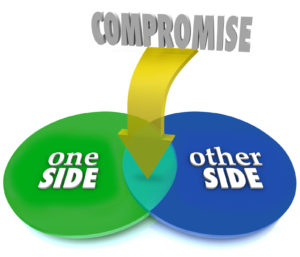 To use mats and runners, or not to.
To use mats and runners, or not to.
We all know that carpeting is going to wear. After all we are walking on it, right? It is only logical to try to slow down or even prevent all together that process. There are a number of ways to do this: vacuuming regularly, taking your shoes off before entering, changing the layout of a room to redirect traffic, etc. Another common thought is to put down a runner or mat over heavily used areas to prevent wear. Is this a good idea? Let’s consider the pros and cons.
There are definite advantages to having mats and runners. As creatures of habit, it can quickly become apparent where we are spending most of our time. Is there a worn area in front of your husband’s favorite recliner? or yours? Is there a path down the hall to the bathroom? Is there excessive wear at the most used entry? Is there heavy wear around an office desk? Putting down a mat or runner immediately stops that wear as it seals off the carpet below and allows little, if any, soil to accumulate.
In many homes there is simply no other way to redirect the flow of traffic; rearranging furniture is not an option. Mats can prevent a lot of wear in these situations as well as the wear that is created in front of recliners. Offices that have chairs that roll back and forth can benefit greatly from a plastic chair mat. The wheels on those chairs wear not only the fibers but also break down the backing of the carpet over time. This can leave the carpet rippled from delamination and heavily faded. A plastic mat improves rolling and protects the carpet from heavy wear.
Sounds like there is no down side, right? Well…
There are definite disadvantages as well to having mats and runners. Let’s start with effect on the carpets first. While mats prevent soil and wear from happening to the areas underneath, the rest of the carpet is still wearing and getting dirty. It is important to remember that carpets change over time due to air, sunlight, and a host of other factors. Carpets also need to ‘breathe’; air needs to be able to move over and through. The carpet under the mat will stay in a ‘time capsule’ and not change. Over a period of time this may create a “footprint.” This is an outline where the mat sits that is generally permanent.
Consider this as well: There are no good ways to hold a mat in place when over carpeting. Using adhesives will create more problems. Nailing it down can damage the materials and is not always possible depending on the subfloor. Rubbery backing materials like latex, may

hold the mat or runner but can seal the carpet and cause a yellowing that cannot be removed. Plastic chair mats have built in cleats that hold it in place but they do not hold any soil; it all gets pushed to the carpet around creating a vivid ‘footprint’ that is permanent.
So, what to do? If at all possible try not to use mats and runners. Many problems can be avoided or solved with better maintenance. If you do need to use a mat, try to rotate the days you use it. One week on, one week off for instance. This allows the carpet to change with the surrounding areas. If this is not possible, a mat or runner may be better than the premature wear and damage that would be caused without it. You just have to go in with your eyes open to the consequences. Remember to clean those carpets regularly!
While there is no perfect solution, hopefully this material will help you make a more informed decision.